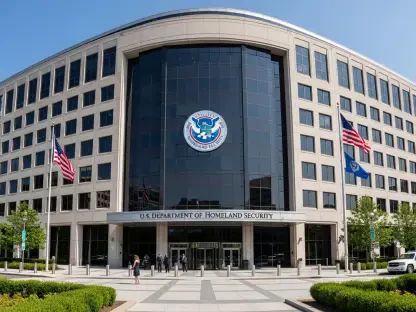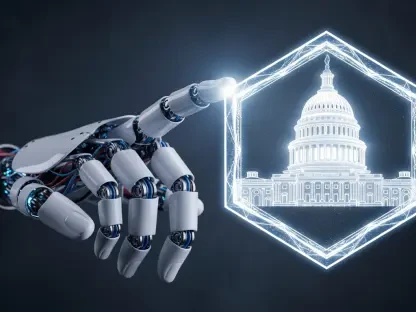As we dive into the intricacies of the recent government shutdown and the stopgap spending bill that promises to end it, I’m thrilled to be joined by Donald Gainsborough, a political savant and the leader of Government Curated. With his deep expertise in policy and legislation, Donald offers unparalleled insights into the machinations of American governance. Today, we’ll explore the historic shutdown, the details of the funding package, the political dynamics at play, and the broader implications for federal workers and the public.
How did we get to the point of needing a stopgap spending bill, and what role did it play in resolving the longest government shutdown in U.S. history?
Well, a stopgap spending bill is essentially a temporary measure to keep the government running when Congress can’t agree on full-year appropriations. This particular bill became necessary because of a deadlock over key issues, including health care costs, which led to a partial government shutdown starting on October 1. Lasting 41 days, it’s the longest in U.S. history simply due to the sheer duration and the snowballing effects on everything from air travel to nutrition benefits. The bill, passed by the Senate with a 60-40 vote, provides funding through January 30 for much of the federal government, giving lawmakers a bit more time to hash out the remaining full-year spending bills. It’s a Band-Aid, but a critical one to get federal workers back on the job and services restored.
What are some of the standout components of this funding package that made it through the Senate?
The package is a mix of short-term and long-term solutions. It includes stopgap funding for most federal operations until the end of January, but it also secures full-year appropriations for specific areas like the Agriculture Department, the Legislative Branch, military construction, and Veterans’ Affairs. These were likely prioritized because they impact essential services and vulnerable populations—think farmers, veterans, and national security infrastructure. It’s a way to signal that even amidst chaos, some stability can be maintained for critical sectors.
With the bill now heading to the House, how urgent is the timeline for a vote, and what’s the next step once it reaches the President’s desk?
Timing is everything right now. House Speaker Mike Johnson has been pushing representatives to get back to Capitol Hill ASAP because delays could jeopardize the reopening of the government. We’re likely looking at a vote within the next few days, assuming travel disruptions don’t get in the way. Once the House passes it, the bill goes to President Trump for his signature. He’s already indicated he’ll sign it, citing his commitment to the agreements within, such as reinstating federal workers who’ve been furloughed. Once signed, it becomes law, and the shutdown officially ends.
President Trump has expressed intentions to honor the agreements in this bill. What do you think are the key commitments he’s focusing on?
I believe he’s primarily referring to the reinstatement of thousands of federal workers who’ve been out of work or working without pay for over a month. That’s a huge relief for those employees and a signal that the government is getting back to business. Beyond that, it’s about restoring public trust that essential services will resume. Trump’s statement about abiding by the deal suggests he sees this as a win, or at least a necessary compromise, to move forward on other priorities.
There’s also been talk from the President about tackling health insurance costs with direct payments to people rather than insurance companies. Can you unpack what that might mean and how feasible it is?
This idea of direct payments is intriguing but vague at this stage. I think what Trump is getting at is bypassing the traditional insurance model to give Americans more control over their health care dollars—potentially funding health savings accounts or providing subsidies directly to individuals. It’s a concept that appeals to those frustrated with high premiums and complex insurance systems. However, the logistics are daunting. Redirecting funds in this way would require massive legislative overhaul, not to mention buy-in from a deeply divided Congress. Given the recent shutdown over health care disagreements, I’m skeptical about its short-term feasibility without a detailed plan and bipartisan support.
House Speaker Johnson emphasized the urgency for lawmakers to return to Washington. Why is speed so critical at this juncture?
Speed is critical because every day the government remains shut down, the damage compounds. We’re talking about federal workers without paychecks, disrupted air travel due to overworked air traffic controllers, and delayed benefits for vulnerable populations. Johnson knows that a delayed House vote risks prolonging these issues, potentially undermining public confidence further. Plus, with the stopgap only lasting until January 30, there’s no time to waste before tackling the full-year spending bills.
Speaking of air travel, how have flight delays during the shutdown impacted the ability of House members to get back for this crucial vote?
The shutdown has created a real mess for air travel, with thousands of flights delayed or canceled on day 41 alone. A big part of that is air traffic controllers calling in sick or being unable to work under the stress of not getting paid. For House members, many of whom haven’t been in session since mid-September, getting back to D.C. isn’t as simple as hopping on a plane. These disruptions could mean some miss the vote if they don’t heed Johnson’s call to return immediately, potentially slowing down the process to reopen the government.
Johnson highlighted the plight of air traffic controllers, describing them as overworked and unpaid. Can you elaborate on how the shutdown has affected their work and personal lives?
Absolutely. Air traffic controllers have one of the most high-stress jobs out there, managing the safety of thousands of flights daily. During the shutdown, many have been working without pay, which adds an unimaginable layer of personal strain—think unpaid bills, family stress, and the mental toll of financial uncertainty. Some have called in sick, likely due to exhaustion or protest, which has ground air travel to a halt in many areas. It’s a domino effect: their absence exacerbates delays, which then impacts everything from commerce to congressional travel.
President Trump took a strong stance on social media about air traffic controllers, threatening to ‘dock’ those who didn’t return to work. What do you think he meant by that, and what could be the fallout for these workers?
When Trump mentioned ‘docking,’ I believe he’s implying some form of penalty, likely a reduction in pay or benefits, or even disciplinary action against controllers who took time off during the shutdown. It’s a harsh tone, and the lack of clarity makes it even more unsettling for workers already under pressure. The fallout could be significant—lowering morale, prompting resignations, or even sparking legal challenges if workers feel unfairly targeted. It risks alienating a critical workforce at a time when their cooperation is desperately needed.
On the flip side, Trump suggested $10,000 bonuses for controllers who didn’t take time off. How do you see this proposal affecting morale and fairness among these workers?
Offering bonuses to those who stayed on the job could be a double-edged sword. On one hand, it’s a gesture of appreciation for those who endured the shutdown without stepping away, potentially boosting their morale. On the other, it creates a divide among workers, implying that those who took time off—perhaps out of necessity or unbearable stress—didn’t do enough. It risks breeding resentment rather than unity in a profession that relies on teamwork. Fairness is a big question mark here, and without clear criteria, it could feel like a political carrot rather than a genuine reward.
Trump also expressed frustration with controllers who took time off despite knowing they’d eventually be paid. How do you interpret his perspective, and do you think it’s reasonable?
Trump’s frustration seems to stem from a belief that these workers should have toughed it out, knowing back pay was likely coming once the shutdown ended. He appears to view their absences as a lack of patriotism or commitment during a national crisis. While I understand the frustration over disrupted air travel, I think it’s a bit disconnected from the reality these workers face. Going weeks without pay isn’t just an inconvenience—it’s a crisis for many families. Expecting them to work under such conditions without faltering overlooks the human element. His perspective might resonate with some, but it risks alienating those who feel they had no choice.
With stopgap funding only lasting until January 30, what challenges lie ahead for lawmakers in finalizing the full-year spending bills?
The next few months are going to be a tightrope walk. Lawmakers need to negotiate and pass nine of the twelve full-year spending bills by January 30, which is a tall order given the deep partisan divides we’ve just witnessed. Key sticking points, like health care costs and premium relief for Affordable Care Act participants, remain unresolved. Both sides will need to compromise, something that’s been in short supply lately. If they fail, we’re looking at another potential shutdown, which would further erode public trust. It’s a race against the clock with high stakes.
Certain departments, like Agriculture and Veterans’ Affairs, received full-year funding in this package. What’s behind the decision to prioritize these areas over others?
Prioritizing full-year funding for departments like Agriculture and Veterans’ Affairs reflects both practical and political calculations. Agriculture is vital for food security and rural economies, which are often politically sensitive areas. Veterans’ Affairs speaks to a bipartisan commitment to supporting those who’ve served, and it’s an area where lawmakers can’t afford to look negligent. Military construction also ties into national security, another non-negotiable. These choices signal to constituents that even in a crisis, the government is safeguarding core needs and values, while buying time to debate less urgent or more contentious appropriations.
Looking ahead, what is your forecast for how these ongoing budget battles and partisan tensions might shape the political landscape in the coming year?
I think we’re in for a bumpy ride. The shutdown has exposed raw partisan divides, especially over health care, and the anger from both sides—whether it’s Democrats frustrated over premium costs or Republicans pushing back against perceived overreach—won’t dissipate quickly. With stopgap funding as a temporary fix, the January 30 deadline looms large, and another showdown is possible if compromise remains elusive. Beyond that, public frustration with gridlock could influence voter sentiment heading into future elections, potentially benefiting candidates who promise action over obstruction. Trust in government is fragile right now, and how leaders handle these next steps will either start to rebuild it or fracture it further.









